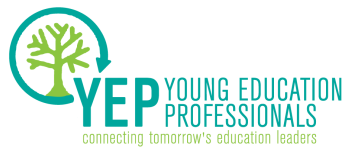 Courtesy of Clare Stead.
Courtesy of Clare Stead. This was the interview question of my nightmares. Except I wasn’t asleep. This was my first encounter with iSchool Zambia, an inspiring business initiative improving teaching and learning through solar-powered tablets and e-learning for teachers in Zambia. (Proper foot hygiene was a public health issue. Some walked around barefoot, and for many, healthcare was too expensive and out of reach.) My year as a curriculum designer for this innovative start-up pushed me creatively, as I developed solutions to challenges such as “How can 90 students build a collage with neither paper nor glue?” I was involved with iSchool before the program was rolled out in schools. Now three years into implementation, I caught up with Education Director Clare Stead to find out how the program has been received.
Tight budgets and a shortage of teachers in Zambia mean that classes are often overcrowded, and resources (including books and computers) are few and far between. As a result, rote learning — where the teacher chants information and the class repeats it — is very much the norm. iSchool is changing this not by reducing class size, but by altering the class structure so all students get more quality learning time. A class is split into three groups: One works directly with the teacher, one uses the e-learning materials on the tablets in pairs, and one works independently on a creative task. In theory, the results are smaller groups and less competition for resources. But is it effective?
“The students love it!” Clare told me. “Behavior issues have almost completely disappeared. The students are engaged and enjoy learning. The test results, so far, show that students are making significant gains in literacy, numeracy, and critical thinking.”
For the teachers involved in the pilot, this is a radical change from the style of teaching they are used to. The switch to iSchool’s active learning model is supported by an e-learning professional development training program on the tablets. “Before teachers begin using iSchool, we give them a three day training — one day on using the tablets and two days on active learning,” Clare explained. “During the school year, the school has a weekly ongoing professional development focus. Each tablet contains a study module on the weekly topic, the lessons have been designed to incorporate it, and the staff meet to discuss it. So the teachers are learning, as well as the students.”
The results have been staggering. Previously teacher absenteeism was at 68 percent. This is common in rural areas, where teachers — many with little or no training — travel long distances to work, and where difficult teaching conditions can lower morale. Absenteeism has now been reduced to almost zero. The workload is less intimidating, teachers say, because they have resources available. They have materials for every lesson for the entire school year available on their tablets, which also reduces outside planning time and their reliance on old or stale resources. Students, in turn, are more engaged which makes for a more purposeful and less antagonistic atmosphere; and the tablets record each class’ progress through the curriculum, which helps teachers to keep pace.
Although iSchool is seeing great success now, implementation has not been without its challenges. Finding staff to write the program was difficult, as local teachers, who knew the context, were not trained in active learning, and foreign teachers trained in active learning were often too unfamiliar with the Zambian context to write relevant materials.
Zambia has a rich linguistic culture with seven official languages, plus English and Lusaka Nyanja, a language which is widely spoken but does not exist in written form. Teaching children in their own language was central to iSchool’s philosophy, so every piece of learning material (teacher instructions and student resources) had to be translated into all eight languages. Since some languages are more verbose than others, iSchools’s graphic designers sometimes had to alter the entire layout of a presentation to fit in the words.
How much does all this cost? Schools pay $300 for a teacher tablet and $220 for a student tablet. Because of the way the program is designed, a set of 10 student tablets can be used in five classes over the course of one day, so schools do not need to buy one set for every class. For the cost of a teacher tablet, the school receives not only lesson delivery instructions, but a whole teacher training system that aims to improve results.
What’s next for iSchool? Clare said they are looking into using the tablets for adult education after school hours. “We want to expand our reach within Zambia and are considering moving into other countries,” she said. “It’s really a project without an end.”
Wenna Price is an independent education consultant with a background in teaching, teacher training, and curriculum design. Reach her via Twitter.

 RSS Feed
RSS Feed